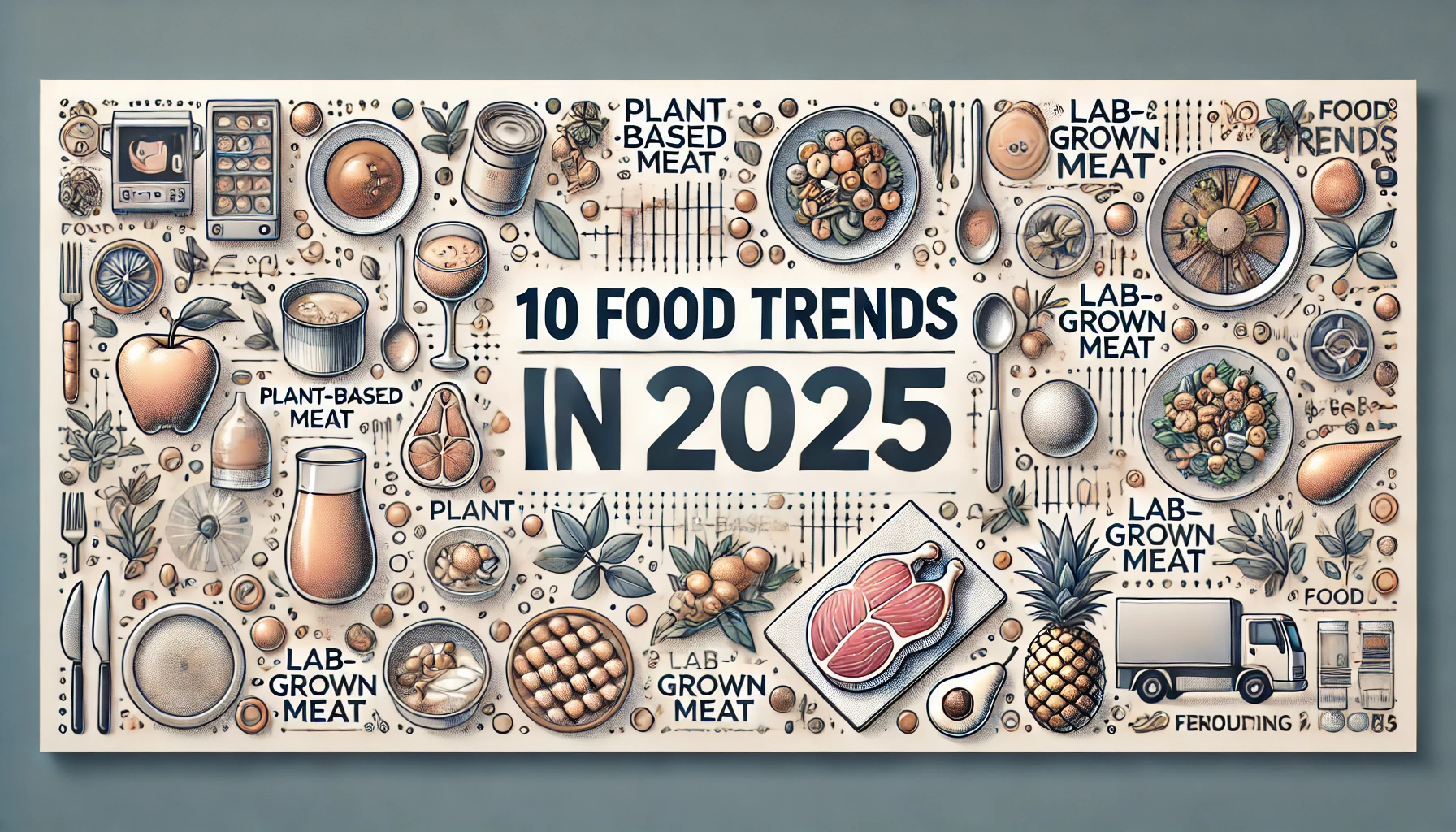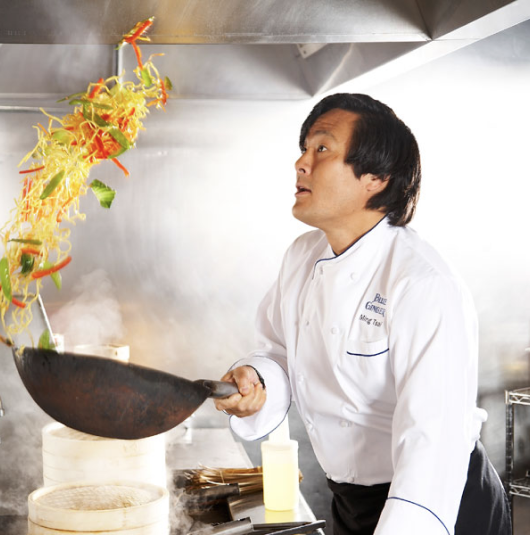The 10 Hottest Food Trends of 2025: What’s on the Menu for the Year Ahead
As we look toward 2025, food trends continue to evolve, reflecting shifts in consumer behavior, cultural influences, and the impact of global events. From fiery flavors to nostalgic innovations, the culinary landscape is set to be more vibrant and diverse than ever. Here’s a look at some of the most anticipated food trends for 2025 that are making their way onto menus and into kitchens worldwide.
1. Next-Level Spicy Foods: Turning Up the Heat
The world of spicy foods is reaching new heights in 2025, pushing the boundaries of heat and flavor. While “swicy” (sweet and spicy) flavors have been popular in recent years, the focus is now on pushing the Scoville scale higher with ultra-hot ingredients like ghost peppers, habaneros, and Calabrian chiles. This trend is driven by a desire for bold, memorable eating experiences and the influence of social media challenges that test consumers’ heat tolerance
Expect to see an array of tongue-tingling products, from fiery sauces to snacks that pack a punch. Brands are embracing the challenge culture, offering everything from spicy gummy bears to supercharged Bloody Mary mixes. This trend isn’t just about the heat; it’s about enjoying complex layers of flavor that balance spice with sweetness, tanginess, or umami. Whether it’s in a restaurant dish or a home-cooked meal, spice lovers are in for a treat this year.
2. Apocalyptic Staples: The Rise of Doomsday Foods
The pandemic has left a lasting impact on how we stock our pantries, and 2025 will see a continued fascination with apocalyptic staples. This trend is all about long-lasting, shelf-stable foods that are perfect for stocking up in uncertain times. Freeze-dried meals, pickled vegetables, and canned goods are becoming culinary staples, catering to everyone from outdoor adventurers to those who simply enjoy the security of a well-stocked pantry.
The appeal of these foods lies in their convenience and the creativity they inspire. Think freeze-dried salsa that lasts for years, or flash-frozen gourmet meals that can be heated up in minutes. While these foods were initially designed with survival in mind, they’ve evolved into gourmet products that bring restaurant-quality meals into the home, making them both practical and delicious.
3. Fancy Groceries: Luxury in the Pantry
As dining out becomes more expensive, consumers are finding new ways to treat themselves at home. Fancy groceries are becoming a staple for those looking to replicate the dining-out experience without leaving the house. This trend includes everything from truffle-infused sauces and snacks to premium cheese and charcuterie packs that elevate everyday meals into something special
Specialty grocery stores are on the rise, offering curated selections of high-end products that cater to a growing demand for indulgence. Consumers can enjoy restaurant-quality food at home, whether it’s a luxurious almond olive oil cake mix or gourmet potato chips. This trend speaks to our desire for affordable luxury, allowing us to splurge a little even when we’re cutting back elsewhere.
4. Ready-to-Eat Korean Meals: A Taste of Seoul at Home
Korean cuisine has been steadily gaining popularity in the U.S., and 2025 is set to be the year of ready-to-eat Korean meals. These dishes, which include favorites like tteokbokki, kimchi rice bowls, and bibimbap, offer a quick and delicious way to enjoy authentic Korean flavors at home. The rise of retailers like H Mart has made these meals more accessible, allowing consumers to explore new flavors without the need for extensive cooking skills
These meals are perfect for those who love bold, spicy flavors and the convenience of a quick, satisfying meal. The trend ties into broader movements like the popularity of global cuisine and the demand for spicy foods, making Korean ready-to-eat dishes a standout in the crowded market of convenience meals.
5. Snacking Becomes a Priority: The Rise of Snack Culture
Snacking is no longer just a between-meals indulgence; it’s becoming a key part of the dining experience. In 2025, restaurants and convenience stores are elevating their snack offerings to cater to a growing market of consumers who prefer grazing over traditional meals. Spicy and indulgent snacks like Buffalo Ranch-flavored items, bold and zesty chips, and churros are making their way onto menus as the lines between snacks and meals blur.
This trend is particularly popular among younger demographics like Gen Z, who are known for their love of snacking. Restaurants are capitalizing on this by offering unique, high-quality snacks that draw customers in and keep them coming back for more. As snacking continues to evolve, expect to see more creative and flavorful options that satisfy cravings and fit into our increasingly busy lifestyles.
6. “Newstalgia”: Reimagining the Past
Blending nostalgia with modern innovation, “newstalgia” is all about reimagining classic dishes with a contemporary twist. This trend taps into the emotional connection we have with familiar foods, updating them with high-quality ingredients, novel presentations, and unexpected flavor combinations. Think of it as comfort food for the modern age.
One standout example is Shake Shack’s approach to the classic burger stand experience, which combines the nostalgia of crinkle-cut fries with gourmet dipping sauces. This approach allows consumers to enjoy the best of both worlds: the comforting familiarity of their favorite foods, paired with the excitement of something new. As consumers seek comfort in uncertain times, newstalgia offers a way to revisit the past while still looking forward.
7. Dirty Sodas and Non-Alcoholic Beverages: A New Kind of Refreshment
Non-alcoholic beverages are seeing a massive boost, driven largely by Gen Z’s preference for fun, flavorful drinks without the buzz. Dirty sodas, a quirky mix of soda, syrups, and cream, are gaining popularity, especially in regions like Utah where the trend originated. These drinks are not just for those avoiding alcohol; they’re a fun, creative option for anyone looking to try something new
Dirty sodas are just one part of the broader rise in non-alcoholic drinks, which include everything from mocktails to craft sodas and flavored sparkling waters. These beverages are perfect for social occasions, offering a way to enjoy a special drink without the effects of alcohol. As this trend grows, we can expect to see even more innovative and Instagram-worthy options hitting the market.
8. Regenerative Agriculture: Beyond Sustainability
Regenerative agriculture is gaining momentum in 2025 as consumers become more conscious of their environmental impact. This farming approach goes beyond sustainability by actively restoring soil health, increasing biodiversity, and improving water cycles. Brands and farms that practice regenerative agriculture are creating foods that not only taste good but also help heal the planet.
From regenerative grain-based products to sustainably raised livestock, this trend emphasizes transparency and environmental stewardship. Consumers are increasingly supporting companies that prioritize these practices, making regenerative agriculture one of the most influential trends of the year.
9. Functional Foods: Nutrition with a Purpose
Functional foods—those designed to offer specific health benefits—are becoming more prominent as people look to optimize their diets. Products fortified with probiotics, adaptogens, and other health-boosting ingredients are taking over grocery shelves. From mood-enhancing snacks to gut-friendly drinks, these foods cater to consumers looking to improve their well-being through what they eat
Expect to see an increase in foods that promise more than just basic nutrition, appealing to those who want to support their physical and mental health with every bite.
10. Zero-Waste Cooking: Making the Most of Every Ingredient
As sustainability becomes a bigger focus, zero-waste cooking is making waves in kitchens across the globe. Chefs and home cooks alike are embracing the challenge of using every part of an ingredient, from root to stem and peel to seed. This trend reduces food waste and encourages creativity in the kitchen, turning scraps into delicious meals
From using vegetable peels in broths to creating sauces from leftover greens, zero-waste cooking is all about maximizing flavor while minimizing waste. It’s a movement that’s not just environmentally friendly but also highly rewarding for anyone who loves a culinary challenge.
Looking Ahead: A Taste of 2025
The food trends of 2025 are a reflection of the times we live in: a mix of indulgence, nostalgia, and practicality. As we continue to navigate a world shaped by economic pressures, social media influences, and a desire for new experiences, these trends offer a glimpse into how we eat, drink, and find joy in the everyday. From fiery snacks to luxurious pantry staples and a renewed focus on sustainability, 2025 promises to be a year of culinary surprises that keep us excited about what’s next on the menu.



